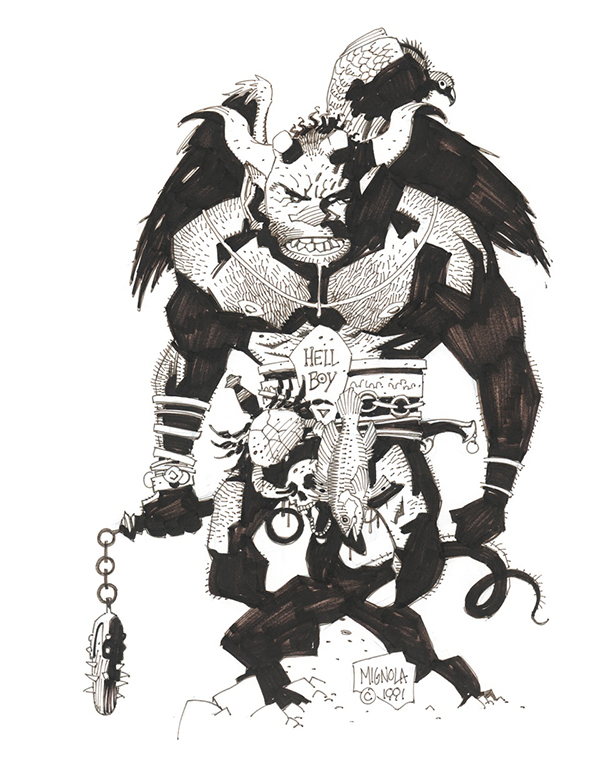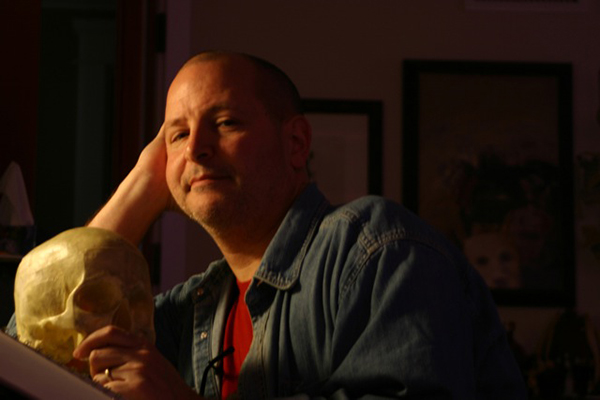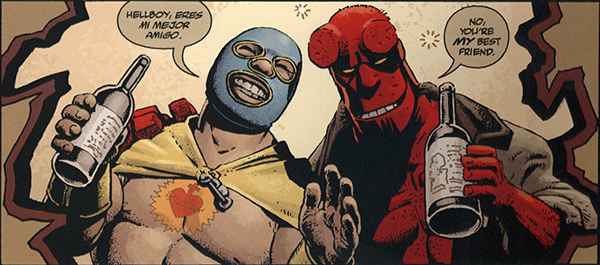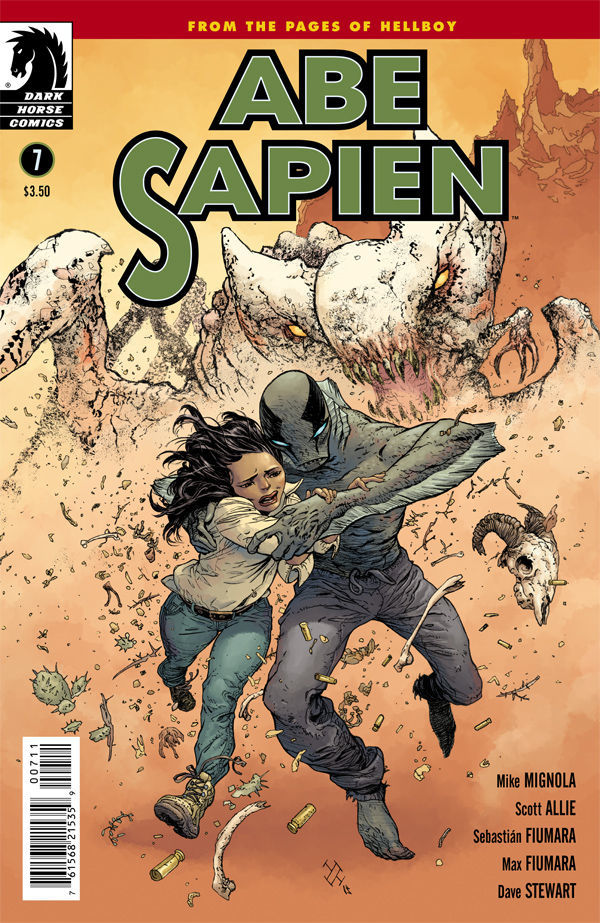
Hellboy has been kicked, punched, clawed and smashed by tentacled beasts. He’s had a nail shoved in his head, a knife thrust in his back and a spear gouged through his chest. He’s killed giants, maimed witches and swung a stone hand like a sledgehammer. He likes pancakes and hates Nazis. He’s the Beast of the Apocalypse, the rightful king of Britain and a current resident of Hell. And that’s just in the character’s first 20 years.

The journey started in 1991 with a convention sketch and evolved into an ever-growing, full-blown universe, spawning spinoffs for such as titles as BPRD, Abe Sapien, Lobster Johnson and other monster mashers that have kept fans of occult adventure chomping at the bit. “When I did that first sketch, I wasn’t even thinking I’d do it as a comic; it was just a goof,” creator Mike Mignola told Paste over the phone. “Now I’m thinking it’s going to stick around, but for the longest time I wouldn’t allow myself to think I was going to get away with being able to do this thing.”
In celebration of the anniversary, Dark Horse is releasing Hellboy: The First 20 Years, a collection of Mignola’s captivating art. “I realized I didn’t hate a lot of it as much as I thought I did, because I do tend to hate a lot of my own stuff,” he said. “One thing I think this book does show really nicely is how this thing blew up. You get to the last half of the book and you see a lot of pages without Hellboy.”
Much of Hellboy’s success arguably rests on two of the series’ integral hallmarks: the nuanced depth of its characters and Mignola’s striking visuals. “You want to look at Hellboy, you want to draw Hellboy, you want to follow Hellboy from story to story. The same is true with Abe,” Scott Allie, editor in chief of Hellboy publisher Dark Horse and personal editor on the book since (almost) the very beginning, said. Abe Sapien is arguably the second most popular character in the Hellboy stable: a former explorer mutated into a telepathic, humanoid amphibian. “The designs are so iconic, beautiful and repeatable. But Mike also brings this heart to his characters.”
Mignola built his universe around infernal and non-human freaks (a demon, fish man, homunculus and disembodied ectoplasmic spirit) who ironically exhibit disarmingly human hearts. “When I introduced the Kate Corrigan character, the dynamic between Hellboy and her was…this is what I would say, and this is what my wife would say. So all these character things were modeled on what real people would say, regardless of the character being vapor in a suit. I still treated them as a person.”
Throughout its 20-year trek, the characters of Hellboy and beyond have retained their humanity. For Allie, one of the most memorable moments came early on. He recalls the first time he was moved by a scene, in Hellboy: Wolves of St. August, in which BPRD Agent Kate Corrigan talks to a young female ghost. The girl asks Kate why God hates her, to which Kate comfortingly replies that he doesn’t. The ghost then transforms into a wolf and says “Yes he does, he made me this!” “What I love about that moment is how earnest Kate’s reaction seems to be,” Allie said. “The look on her face, it’s very human.”

It would have been easy for Mignola, tempting even, to revolve major chunks of plot around more common conflicts. For example, the government agency Hellboy initially worked for, the BPRD (Bureau of Paranormal Research and Defense), employs a team of monsters tasked with fighting other creatures not dissimilar from them. While this truth may have inspired Hellboy to quite the agency in 2001, rarely are these conflicts so overt. Instead, they manifest as undercurrents moving the story in a beautiful demonstration of “show don’t tell.” “These are real people,” Allie said. “They’re not clichés, they’re not two dimensional.” But, perhaps more than any of these observations, Hellboy’s most relatable and compelling characteristic is his longing for normalcy. He just wants to go to work, unreminded of his origins as a demon baby found off the coast of Scotland during World War II. He’s also the infernal creature destined to herald the end of times. Hellboy rages against his fate: don’t call him Beast of the Apocalypse or King of Britain or leader of anything. The title taps into the universal punk catharsis of righteous disobedience, as Hellboy growls “Screw You!” in the face of imposed prophecy.
Mignola’s books don’t take you where you think you’re going, whether they feature their titular character quitting his job or the rational fish monster Abe Sapien taking a sojourn through a desert. The California writer and artist hijacks the reader to new places visually as well. It starts with the designs, Allie said. With his sloped shoulders and monstrous visage, Hellboy is an unconventional leading man. He bucks the typical image of the broad-chested hero, arms akimbo and cape flapping in the wind, shining in the sun. Mignola also defies symmetry; Hellboy’s massive upper body sits atop skinny legs, not to mention the giant stone hand that looks like it could anchor a small boat. But the Mignola aesthetic is so much more than that. His is a world where background statues distill menace and drama to the page, where a single, tiny panel closed in on that statue’s lifeless eye is anything but filler. These still-life asides incorporate a melancholic calm and flow that can’t be found in any other comic available. At their best, Mignola’s illustrations strike a universally expressive tone, visceral in their simplicity and as timeless as Bosch’s epic depictions of heaven and hell.
The initial convention sketch from 1991 bears almost no resemblance to the World’s Greatest Paranormal Investigator as we know him today, other than a big guy with two horn-like nubs on his forehead and a belt buckle that reads “Hell Boy.” Something about it stuck with Mignola, though, and he eventually started developing the idea as a series. He took it with him, riding a creator-owned wave to Dark Horse comics, but it still needed focus. “Originally, I had envisioned it as a team book, then I realized who Hellboy was and that he was the most interesting thing about it,” Mignola said. “Hellboy was like my fallback position, because he was the only character name I’d ever come up with that I liked.” To this day, when asked about how his comics came to be, Mignola marvels that Dark Horse took a chance on a series with a name so odd and unmarketable.
The Hellboy world has managed to avoid the convolution that plagues so many long-running series. “One of the things I’ve been very proud of is that it’s just one story, just one ridiculously complex story,” Allie said. To that end, Mignola also credits the small pool of talent charged with steering the art and plot, and the consistency that comes with fewer cooks in the kitchen. “We don’t have what you have with long-running series, which is this writer turns the book over to that writer, who undoes what that writer did, then somebody else comes in and undoes what that guy does,” he said. Allie added, “We’re not puttying in the cracks like some properties try to do, but we’re adding pieces to the story and it grows it up from the bottom, instead of just running out in crazy new directions.”

A consistent direction guides the spinoffs and tales spanning various time periods, allowing the stories to detour to new and unconventional locales. From luchador-inspired Mexico to the French countryside, Mignola knows where they’re headed, though there isn’t a rigidly-defined roadmap directing the way. “A lot of times my co-writing ultimately addresses where things are going, but I don’t want to tell the writer how to get there,” Mignola said. “For the most part, I am the keeper of the mythology.” Allie credits the mythos’ unity to Mignola’s oversight: “Mike can’t remember what he had for lunch yesterday, but in terms of remembering his stories, his brain is fascinating. When it comes to the stories, his memory is a steel trap and his vision is long.”
Perhaps due to the tight brain trust, there haven’t been many spots where the story could have run off the rails. “It’s pretty amazing in 20 years that there aren’t places where we go ‘Oh shit, how are we going to deal with that? I wish that hadn’t happened.’ It’s the beauty of writing things a little vague as you go along: you don’t write yourself into a corner,” Mignola said. Nevertheless, there were a few decisions that could have greatly changed the way the world developed. Allie and Mignola both discussed the fact that the second story arc Wake the Devil, which confirmed Hellboy as the great beast of Revelations, almost had a different ending. “I don’t remember the original ending,” Allie said to Mignola, “but the ending that you wound up drawing, that was how you ended up introducing a lot of the big mythos.” Though he noted that they would have no doubt gotten to the “Beast of the Apocalypse” thing, even if in a roundabout way.
Another declined plot beat involved an early Abe Sapien story that would have majorly changed the Hellboy world. “It would have been closer to old Marvel comics,” Mignola said. “It would have probably introduced an entire race of underwater people that would have really put us in the typical, old-school comic book world rather than what we ended up with. It was much more a nod to Jack Kirby.” Instead, Mignola vouched for a much weirder, creepier direction, another instance of taking what readers expect — that Abe descends from a race of aquatic fish people — and turning it upside down. “We never would have gotten Plague of Frogs, where you get into Abe’s origin in the most bizarre, David Lynch kind of way,” Allie added. “But we never got close to really doing it.”

As the BPRD faces hell on earth, with its bombs and military capabilities, the miniseries Abe Sapien explores the shorter, more poignant personal stories at play. Feeling alienated from the BPRD, grotesque merman Abe takes off on his own to walk the earth, blowing from town to town like the breeze. “It’s the old Incredible Hulk TV series, that formula. [Abe] runs around trying to prove, maybe to himself, that he’s not part of this global disaster,” Allie, who also writes the Abe Sapien series in conjunction with Mignola, said. “I love Abe: it’s one of Mike’s very best designs and one of his most human characters. [We] let him walk the earth, because the earth is really, really interesting right now.”
As of 2012, Hellboy has spent his days in (literal) hell after shuffling his mortal coil with the help of a very angry dragon. Mignola plans to shift gears, not just in the story but in his process. Aside from occultism, folklore has stood at the heart of his tales, from the Russian witch Baba Yaga to Dagda, the Irish fairy king. While readers may have a view of Mignola holed up in a dusty old library pouring over volumes of ancient lore, he says the stories always came first. “It’s not that much about research. It’s about having read a lot of stuff years ago and that stuff has been cooking in the back of my head,” he said. “So for the most part, the research is done on top of stories I’ve already plotted. Not too many stories start as research.”
With Hellboy no longer bound by earthly geography and Mignola free to bounce him around without much call for transitions, Mignola wants to start looking at mythology first. “Ultimately, I want to do a lot of adaptations of other folklore things.” Hellboy in Hell has already morphed into a tiered, sprawling story, which Mignola says will be about four trade paperbacks worth of material. “Once I get through that, what I’m thinking is I can hopefully do these little stories of Hellboy roaming around the neighborhoods of Hell. It’d be fun to do India, but I set all that stuff in Hell so I don’t have to figure out what things would really look like.”
Moving Hellboy’s adventures to Hell not only liberates Mignola to draw whatever he wants, but also allows him to further bend and manipulate the eerie environs to his every whim. While a future in Hell may seem bleak, fans couldn’t have more to look forward to.




0 Response to "Scott Allie And Mike Mignola Look Back on 20 Years of Hellboy"
Post a Comment
thank you for visiting. let's share :)